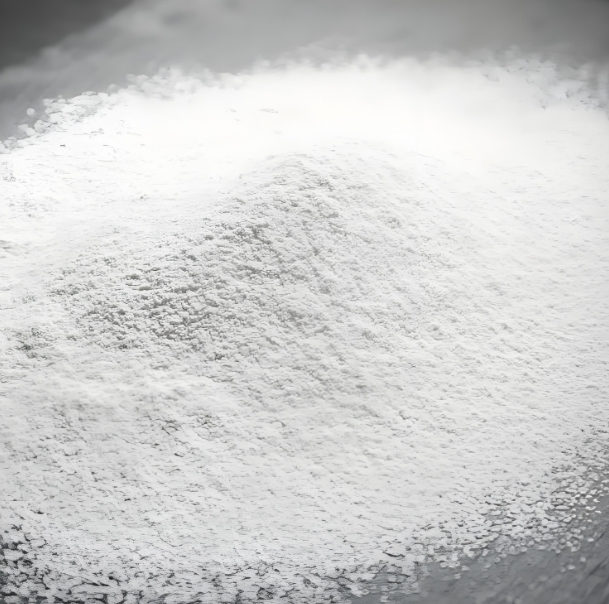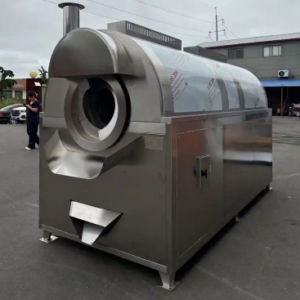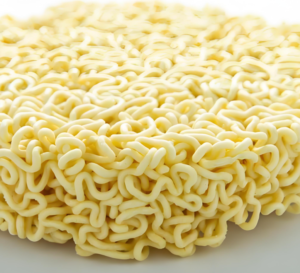<h1>Exploring the Versatile Uses of Modified Starch in Various Industries</h1>Introduction
Modified starch is a key ingredient derived from natural starches through chemical, physical, or enzymatic processes. This alteration enhances its functional properties, making it indispensable in numerous sectors. Businesses in foreign trade often seek reliable sources for modified starch due to its wide-ranging applications. In this article, we delve into the primary uses of modified starch, highlighting its benefits for manufacturers and suppliers.
modified starch production line
ToggleFrom improving texture in food products to stabilizing pharmaceuticals, modified starch plays a crucial role in enhancing product quality and efficiency. Understanding these uses can help B2B professionals make informed decisions when sourcing or incorporating this versatile material into their operations.
What is Modified Starch?
Modified starch refers to starch that has been treated to change its natural characteristics. Common sources include corn, potato, and tapioca, which are altered to improve attributes like solubility, viscosity, and stability. This modification prevents issues such as retrogradation, where starch molecules revert to their original form.
In the B2B context, modified starch is valued for its consistency and adaptability. Manufacturers use it as a cost-effective alternative to natural starches, ensuring better performance in end products. Its production involves safe, regulated processes that comply with international standards, making it a reliable choice for global trade.
Types of Modified Starch
There are several types of modified starch, each tailored for specific applications. Pre-gelatinized starch, for instance, dissolves easily in cold water, ideal for instant foods. Cross-linked starch offers enhanced stability against heat and acid, while oxidized starch improves clarity and film-forming properties.
Etherified and esterified starches provide unique functionalities like thickening and emulsifying. In foreign trade, suppliers categorize these types based on their modifications, helping buyers select the right variant for their needs. This diversity ensures modified starch meets diverse industrial demands effectively.
Applications in the Food Industry
The food industry is one of the largest consumers of modified starch, utilizing it as a thickener, stabilizer, and binder. In products like sauces, soups, and dressings, it maintains viscosity and prevents separation, enhancing shelf life and consumer appeal. For example, in bakery items, it improves texture and moisture retention.
In confectionery, modified starch acts as a gelling agent, creating chewy candies and jellies. B2B suppliers often highlight its role in gluten-free products, where it mimics the properties of gluten for better dough handling. This makes it essential for health-conscious markets, driving demand in international trade.
Additionally, in frozen foods, modified starch prevents syneresis, or the leakage of water during thawing. Its heat stability ensures that ready-meals retain their quality, benefiting food exporters who prioritize product integrity during shipping.
Uses in Pharmaceuticals
In pharmaceuticals, modified starch serves as a binder, disintegrant, and filler in tablet formulations. It ensures tablets hold together during manufacturing while allowing them to break down quickly in the body for effective drug release. This property is critical for controlled-release medications.
Suppliers in the B2B sector provide pharmaceutical-grade modified starch that meets strict regulatory standards, such as those from the FDA or EMA. Its inert nature makes it safe for use, reducing the risk of interactions with active ingredients and improving overall product safety.
Moreover, in topical applications like creams and ointments, modified starch acts as a thickener and stabilizer, enhancing the consistency and spreadability of formulations. This versatility positions it as a valuable component in global pharmaceutical supply chains.
Role in Textiles and Paper Industries
The textiles industry employs modified starch as a sizing agent, which strengthens yarns and improves weaving efficiency. It forms a protective coating on fibers, reducing breakage and enhancing the final fabric’s quality. This application is particularly useful in producing durable clothing and home textiles.
In the paper industry, modified starch enhances paper strength and printability. It acts as a binder in coatings, improving surface smoothness and ink absorption. B2B traders often source it for eco-friendly paper production, as it can be derived from sustainable sources like cassava.
Furthermore, in non-woven fabrics, modified starch provides adhesion and flexibility, supporting applications in hygiene products and filters. Its biodegradability aligns with growing demands for sustainable materials in international markets.
Other Industrial Applications
Beyond food and pharmaceuticals, modified starch finds uses in adhesives, where it provides strong bonding properties for packaging and woodworking. Its water-resistant variants ensure durability in humid environments, making it ideal for export-oriented manufacturing.
In cosmetics, it serves as a thickener in lotions and creams, offering a smooth texture and extended shelf life. The construction industry utilizes it in gypsum board production for better binding and fire resistance, enhancing building material safety.
Additionally, in the oil and gas sector, modified starch acts as a drilling fluid additive, controlling viscosity and stabilizing boreholes. This broad applicability underscores its value in diverse B2B contexts, from small enterprises to large-scale operations.
Benefits of Using Modified Starch
One of the primary benefits of modified starch is its enhanced functionality, which allows for better product performance compared to native starch. It offers improved thermal stability, preventing breakdown during processing and storage, which is crucial for exporters dealing with varying climates.
Cost-effectiveness is another advantage, as modified starch can replace more expensive ingredients without compromising quality. In B2B trade, it reduces production costs while maintaining high standards, providing a competitive edge in global markets.
Environmentally, many modified starches are biodegradable and sourced from renewable materials, appealing to sustainability-focused businesses. Its versatility also minimizes waste, as it can be tailored to specific needs, optimizing resource use in manufacturing processes.
Environmental and Sustainability Considerations
As global trade emphasizes eco-friendly practices, modified starch stands out for its sustainable production methods. Many manufacturers use organic sources and minimize chemical inputs, reducing the environmental footprint. This aligns with regulations like those from the EU’s REACH program.
For B2B suppliers, offering certified sustainable modified starch can differentiate their products in competitive markets. It supports green initiatives, such as reducing plastic use in packaging by providing natural alternatives.
Moreover, innovations in biotechnology are leading to enzyme-modified starches that require less energy, further enhancing its appeal for environmentally conscious industries. This shift promotes long-term viability in foreign trade networks.
Frequently Asked Questions
What is the difference between modified starch and natural starch? Modified starch undergoes processing to alter its properties, making it more stable and functional than natural starch, which can degrade under heat or acid.
How is modified starch produced? It is produced through methods like chemical treatment, physical alteration, or enzymatic modification of natural starches from plants like corn or potatoes.
Is modified starch safe for consumption? Yes, when produced under regulated conditions, it is safe and widely used in food products, with approvals from bodies like the FDA.
What industries benefit most from modified starch? The food, pharmaceutical, textile, and paper industries gain the most, due to its roles in thickening, binding, and stabilizing.
Can modified starch be used in organic products? Some variants can, provided they meet organic certification standards, such as those using physical modification methods without synthetic chemicals.
How does modified starch impact product shelf life? It extends shelf life by improving stability, preventing spoilage, and maintaining texture in products like sauces and baked goods.
What are the cost implications of using modified starch? It is generally cost-effective, offering high performance at a lower price point than synthetic alternatives, benefiting B2B budgets.
Conclusion
In summary, modified starch is a multifaceted material with extensive uses across various industries, from enhancing food textures to supporting pharmaceutical stability. Its adaptability, cost benefits, and sustainability make it a vital component in B2B trade, enabling businesses to innovate and meet market demands. By understanding its applications, companies can leverage modified starch to improve product quality and efficiency, fostering growth in the global marketplace.








